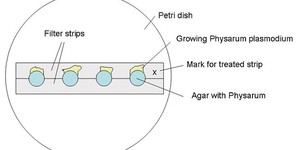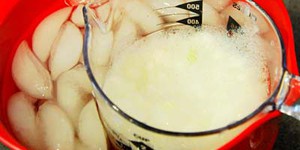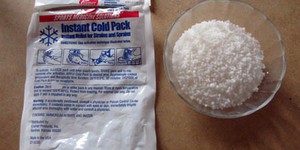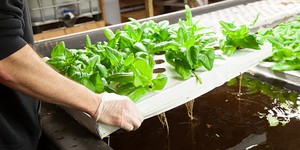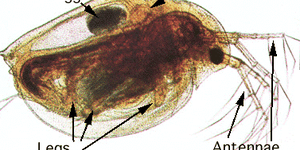Others Like “Too Much of a Good Thing? Study the Effect of Fertilizers on Algal Growth” (top 20 results)
|
In this biology science fair project, you will observe how the Physarum polycephalum (P. polycephalum) organism responds to various amounts of glucose. P. polycephalum is easy to grow in a petri dish and responds in complex ways to its environment. Will it grow toward the chemical as it looks for a meal, or will it flee, trying to avoid further contact? Try this science fair project to learn more about chemotaxis in the fascinating Physarum polycephalum.
Read more
Often, when we think of something that is solid we think about rocks. But in reality, rocks have tiny holes of air inside them. This is called porosity. In this science project you can find out what it means to be "solid as a rock!"
Read more
Everybody knows that worms are good for the soil, but not everybody knows why. Here's a project that investigates just one of the ways earthworms improve the earth. Would earthworm castings (or earthworm manure) help your plants prosper and flourish? If so, how much should you use?
Read more
Harmful algal blooms occur when algae, which form the base of the ocean food web, grow in massive numbers and produce toxic or harmful effects on people, fish, shellfish, marine mammals, and birds. In this project you will learn how to use archived data from continuous monitoring stations on the Chesapeake Bay to study how water quality measurements (dissolved oxygen (DO), salinity, temperature, pH, turbidity, and total chlorophyll) change before, during, and after harmful algal blooms.
Read more
In this project, you'll learn how to isolate DNA from onion cells, separating it from other cellular components in a manner that still preserves its structure and sequence. In the end, you'll have enough DNA to see with the unaided eye, and you'll be able to spool it to demonstrate its strand-like structure.
Read more
Instant cold packs are popular with coaches and parents for treating minor bumps and bruises. The instant cold packs are not pre-cooled—you just squeeze the cold pack and its starts to get cold. So how does it work? In this chemistry science fair project, you will investigate the chemical reaction that occurs in instant cold packs.
Read more
How are we going to feed the more than 9 billion people that will live on Earth by 2050? This is a major question for farmers, ranchers, and food scientists around the globe. It's a big problem, considering that from 2017 to 2050 we will be adding 1.5 billion people and need 20% more food. Linked to this problem of producing enough food is having enough land, water, and other natural resources to make that happen. The final solution will surely be made up of many different approaches working…
Read more
Lead is a very hazardous element. Even very small amounts can cause health problems, especially in babies and young children. One way to determine if a household item, such as a toy or a piece of jewelry, contains lead is to soak the item in a solution, and then test the solution for lead that might have leached out of the item. The goal of this chemistry science fair project is to determine how varying the pH of the test solution affects its ability to dissolve lead, which is a critical step…
Read more
One way to test for the presence of toxic compounds in a water sample is a bioassay. In a bioassay, a living organism serves as a detector for toxins—the same way canaries were used in coal mines to detect invisible toxic gases. In this project, water fleas (Daphnia magna), a freshwater crustacean, are used in a bioassay to monitor water quality. Many variations of this experiment are possible.
Read more
Changes in the environment, or stimuli, affect your behavior and movement over the course of a day: When you get cold, for instance, you might get up and put on a sweater. Or if it is sunny and warm, you might go outside to play sports or go for a walk. Different stimuli, including light, affect the movement of other organisms as well. But how does the type of light influence their movement? Do they respond differently to different kinds of light, depending on other factors in their…
Read more
|
Explore Our Science Videos
The Science of Frescoes – STEM Activity
Test Different Pinwheel Designs
Splitting Water

